Customer experience lifecycle. Mark this term. It's a mouthful and a critical part of your customer experience management strategy – even if you don't know it yet. But what exactly is it? And more importantly, how do you use it in business in practice? So many questions – and this article provides all the answers.
What is a customer experience lifecycle?
A customer experience lifecycle is a framework that businesses use to manage and constantly improve how they interact with their customers. As the name suggests, it covers the entire journey of a customer with a company – from pre-purchase research to post-purchase support. And that's the tricky part: the customer experience lifecycle does not end when a customer buys your product or service.
You might think that once someone pays you, your job is done and dusted. But in reality, it's just the beginning of a new cycle – one where you need to retain customers and turn them into advocates with lifelong brand loyalty in their veins.

But even then, you still can't call it a day. Because customer behavior and needs change over time, so your customer experience lifecycle management strategy has to be dynamic as well.
It might sound like a lot of work – and it is. But the good news is that there are tools and many methods to make your life easier. We'll get to them shortly.
Customer Experience Lifecycle Stages
You're likely to see quite a few of these customer experience lifecycle models floating around. But in general, they all break down the customer journey into these five stages:
Stage 1: Awareness – "I want to know"
This is when the customer becomes aware of your brand and product. They might see an advert, read a blog post, comment on social media posts, or be recommended your product by a friend. This stage is crucial for many reasons.
First, it's your chance to make a good first impression of your products or services. You only get it once over the course of the customer experience lifecycle. Make it count.
In the awareness stage, you have the opportunity to set the right expectations for your product. If you make big promises and fail to deliver, customers will be disappointed – and they'll remember it when they come to leave a review or interact with your brand again in the future.
The main challenge for you is to ensure that the customer knows you exist and that you offer a solution to their problem. If they don't know about you, they can't buy from you.
Stage 2: Research and Interest
Once the customer is aware of your brand, and you got them interested in your offering, it's time for them to conduct some in-depth research. Social media posts or simple marketing materials may no longer be the case. Customers don't want to see the features, but outcomes and benefits for themselves.
At this consideration stage, customers want to know everything about you – what your product does, how it works, what are the features, what other customers think of it, and so on. In and out. From you – and from others who interact with your brand. Your task here is to provide as much information as possible and make it easily accessible. Create a knowledge base for your target audience so they can learn more about your offer.
Here, your potential customers might visit your website, read online reviews, or compare you to your competitors. They can either be put off by what they find – or get even more interested and start to develop an interest. Nurture their interest and help customers make an informed decision. They might be sitting on the fence for a while, but now they're ready to take the plunge – and all your efforts in this stage should be focused on helping even a single customer make that decision.
Stage 3: Purchase – "I want to buy"
This is it. Your moment of truth. The customer has decided they want your product and are now ready to make a purchase. Your job here is to make the transaction as smooth and easy as possible. No hiccups, no delays, no problems. The purchase is just the beginning, but it's a crucial stage nonetheless.
You need to take care of the customer at this stage, as they're likely to be the most vulnerable. They might have buyer's remorse or feel like they made a mistake. It's your job to make them feel confident about their decision and ease any doubts they might have.
Mistakenly, many stop caring about customer experience lifecycle right here. Since the purchase process has been done, then the job is done, right? Wrong. The customer experience lifecycle stages don't end here. In fact, it's only just the beginning of the buyer's journey... It can be a single transaction for your customers, but for you, it's a brand new start for the acquisition phase – and a route your customer takes towards the customer retention stage.
Stage 4: Post-purchase engagement
After the purchase has been made, it's time for the customer to start using your product. The post-purchase engagement stage is when your customers form their first impressions and decide whether they like it or not. It's important to stay engaged with your customers at this stage and collect feedback. What do they think of the product? Is there anything you can do to improve their experience?
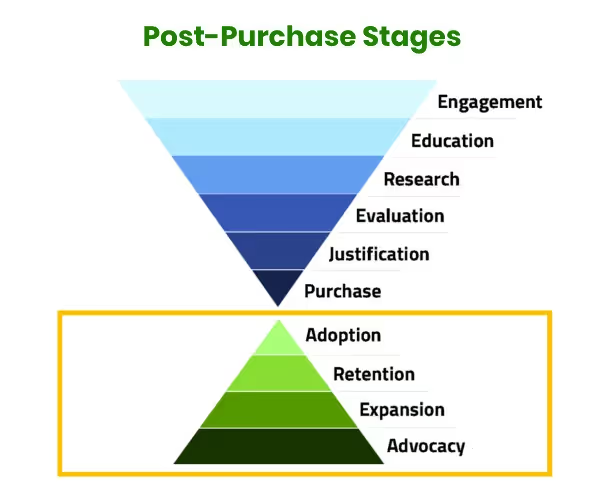
Assuming that once a purchase process has been successfully completed, they get happy customers who will make repeat purchases in no time, is simply off. Things can go wrong, and it's crucial to be there for your customers if they need you and further assistance.
The post-purchase stage is also a good opportunity to upsell or cross-sell related products. If the customer satisfaction is overall high, you can rely on higher customer engagement and better customer relationships. And this, in turn, can lead to creating a community of loyal fans around your brand.
New customers may have found you via multiple channels – social media, industry experts' commentary, or from loyal customers – but how you treat them in the customer lifecycle after they hit "purchase" is crucial for their connection to your brand.
Aftercare is vital for ensuring your customers come back to you in the future. This might include providing customer support, sending personalized content, sending follow-up emails, or inviting them to a customer loyalty program so you can create an omnichannel customer experience.
Stage 5: Brand Advocacy
The final stage of the customer experience lifecycle is advocacy. This is when customers become brand ambassadors and promote your product to their friends and family. At this stage, they're not just satisfied with your product – they love it.
If you do it right, this stage will not only bring you money but also be a joy to watch. You can get more customers, but also save your budget on marketing and advertising. Your existing customers are your best source of new business, so it's important to take care of them and turn them into advocates.
The best way to do this is by continuing to provide an excellent customer experience long after they've made a purchase. If they're happy with your product and your service, they're much more likely to recommend you to others. Then, potential customers interact with your advocates and come to your business.
For one client, it's a final push, enough to make purchases. Another potential customer may need more time for comparing products or just mingling around – but they can end up being a "repeat customer" on the spot too. You should also make your customers feel valued and appreciated, as this will encourage them to keep coming back. Premium feeling packaging, handwritten thank-you notes, and loyalty programs are all great ways to make your customers feel special.
There are many different methods of creating a CX lifecycle, but the most important thing is to make sure that each stage is given the attention it deserves. The best way to do this is to use customer experience software.

How to manage the customer lifecycle
The customer experience lifecycle is important, but it's also just one part of the bigger picture. To truly understand your customers, you need to take a holistic view of their journey. This means understanding every customer touchpoint they have with your brand – from their very first interaction right through to post-purchase support.
The good news is that there are plenty of tools out there to help you do this. Customer experience software like Survicate can help you collect customer feedback at all stages of the customer journey. No matter if you need to reach new customers, convert prospective customers, or reengage actual customers you have in your loyal customer base – Survicate comes with an array of options to help you do just that.
Best tips for customer lifecycle management
Involve your team in customer lifecycle management
Make sure everyone in your company is aware of the customer experience lifecycle and their role in it. Your sales team should be focused on acquiring new customers, while your customer support team should be taking care of post-purchase issues. With premium clients, you may want to consider involving a dedicated customer success manager for building stellar customer relationships.
But everyone from the CEO down to the sales rep needs to understand the importance of providing a great customer experience. Not just for the bottom line, but for the satisfaction of everyone involved.
Regularly review your customer journey
The customer experience lifecycle is not a static concept. As your business grows and changes, so too will the journey your customers take. For example, at the very beginning of your journey, you can offer a free trial or money-back guarantee to help reduce the risk of purchase. But as your business becomes more established, you might want to consider removing these offers and focusing on other marketing strategies.
Or, your initial customer lifecycle map had to drastically change due to a business pivot in your company – and now, you need to concentrate your efforts solely on customer acquisition. Or, you may want to focus on generating a lot of interest first, then focus on converting that interest into sales or organize helpful resources for running brand advocacy efforts.
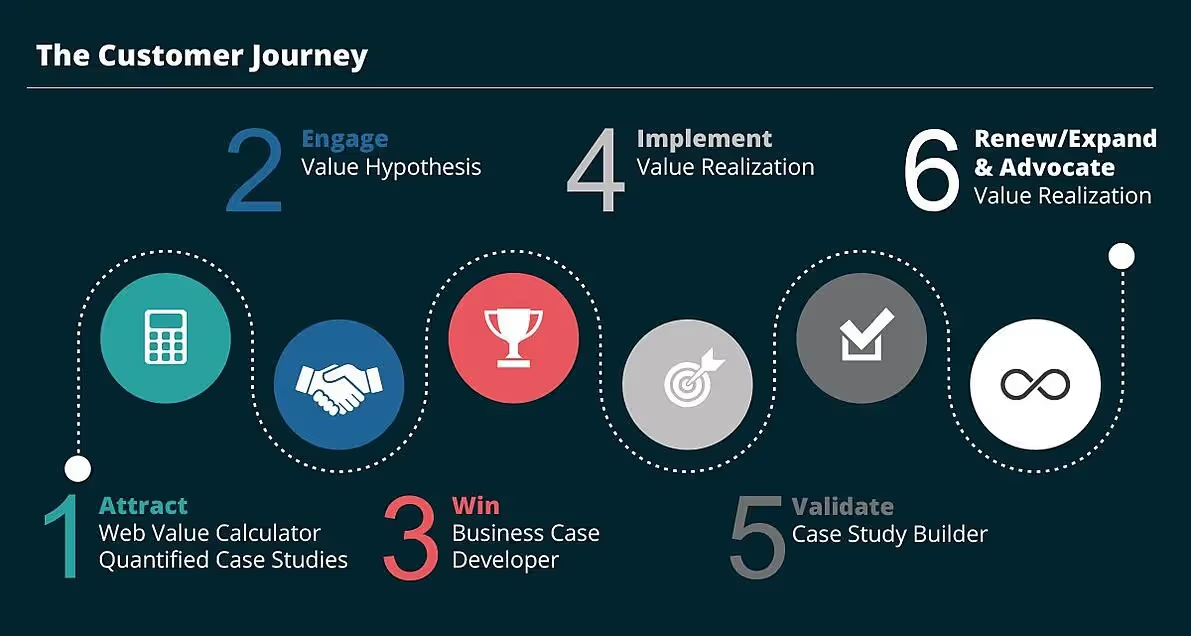
The only way to know for sure is to regularly review your customer journey map and make changes and customer experience optimizations where necessary. If you want to provide a great customer experience, you need to understand what your customers want. And the best way to do that is to collect feedback at every stage of their journey.
This is where customer experience software like Survicate comes in. With our help, you can collect feedback at every stage of the customer lifecycle using tools like survey software.
Check your competitor's footprints
As you move forward with your customer experience management strategy, it's important to keep an eye on your competition. Naturally, you won't be able to please everyone – but you can learn a lot from your next competitive battleground.
It's also not about only checking they're doing well and trying to replicate it in your own business. Simply look for an opportunity for improvement, and be sure to take it. After all, the goal is to provide the best possible customer experience – not just good, but great.
Metrics & Data Analysis
In all customer lifecycle stages, you cannot forget about data and assigning metrics. All marketing campaigns, the acquisition process as a whole, and each purchase stage – it's all crucial for customer success, but only if it has accompanying data with it to give you the complete picture of how you're doing. To increase sales and identify problems in your marketing plan, you need to verify both qualitative and quantitative data flowing from your potential target audience and current customer base.
You can draw some conclusions for improving your product management and employee experience in terms of customer experience lifecycle, too. Imagine that you have a flawless offer and everyone seems to be loving your brand, yet conversions don't flow. Upon customer experience analysis, it can turn out that your stages of the customer lifecycle need solid rework only because responsibilities in your team weren't distributed in a crystal clear way. Before you move to the next stage, always double check if you've done everything that was possible with the customers data you already have at your disposal.
Put an emphasis on tracking customers
There's no point in going through all the trouble of creating a customer experience lifecycle if you're not going to track your customers' behaviour.
- Are they transitioning smoothly between stages?
- Are they getting stuck somewhere?
- Are they leaving your sales funnel entirely?

By tracking your customers' behaviour, you can identify any potential problems and address them quickly. The sooner you catch a problem, the easier it is to fix. You need to be able to see how they move from one stage to the next and identify any areas where they might need more help, encouragement, or motivation.
That's not enough either as you need to take action on that feedback. The insights you glean from customer feedback should be used to improve your business – not just sit in a spreadsheet gathering dust. Only then can you hope to provide a truly great customer experience and foster brand loyalty among your customers.
Make the most of customer lifecycle stages
The customer experience lifecycle is a continuous cycle that begins when a potential customer first becomes aware of your brand and ends when they become an advocate for it.
It's important to nurture customers at every stage of their journey if you want to turn them into lifelong fans of your business. And if you use a high-level tool like Survicate, this will become less of a duty and more of a pleasure. If you’re not, sign up for Survicate's 10-day free trial and start improving your B2B customer lifecycle!








.webp)

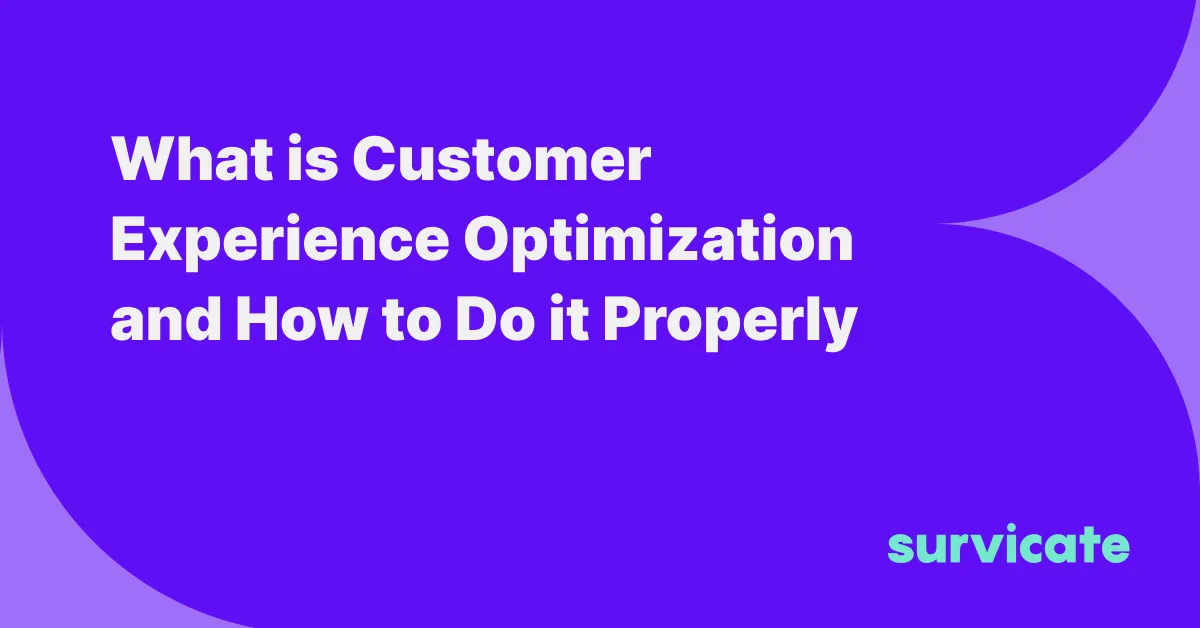
.webp)
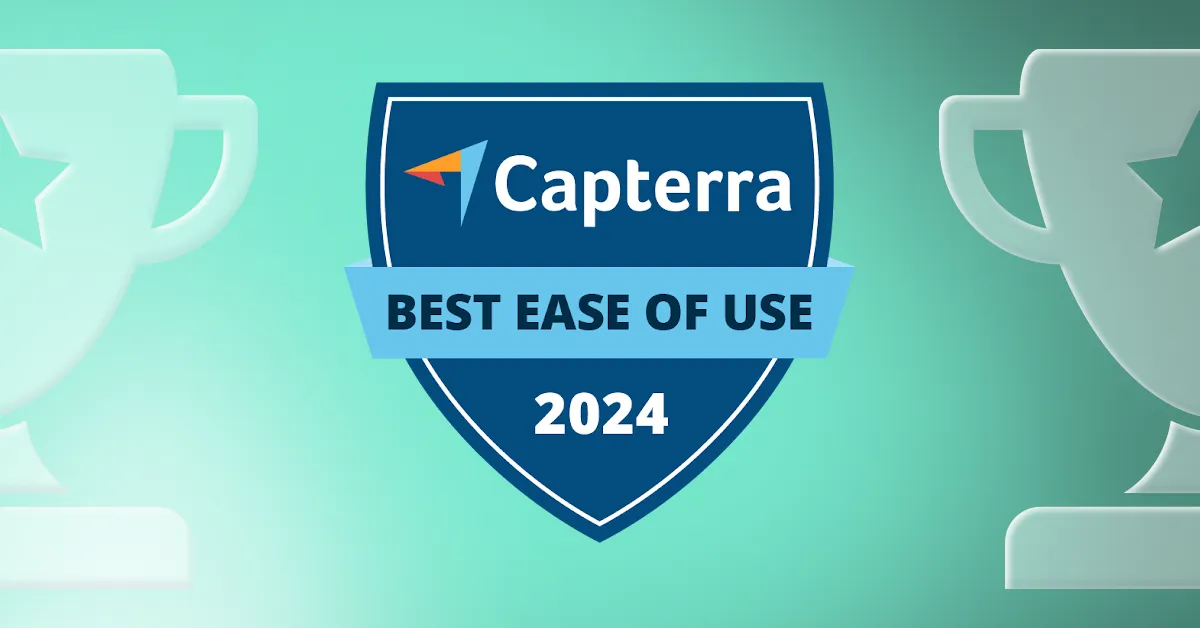
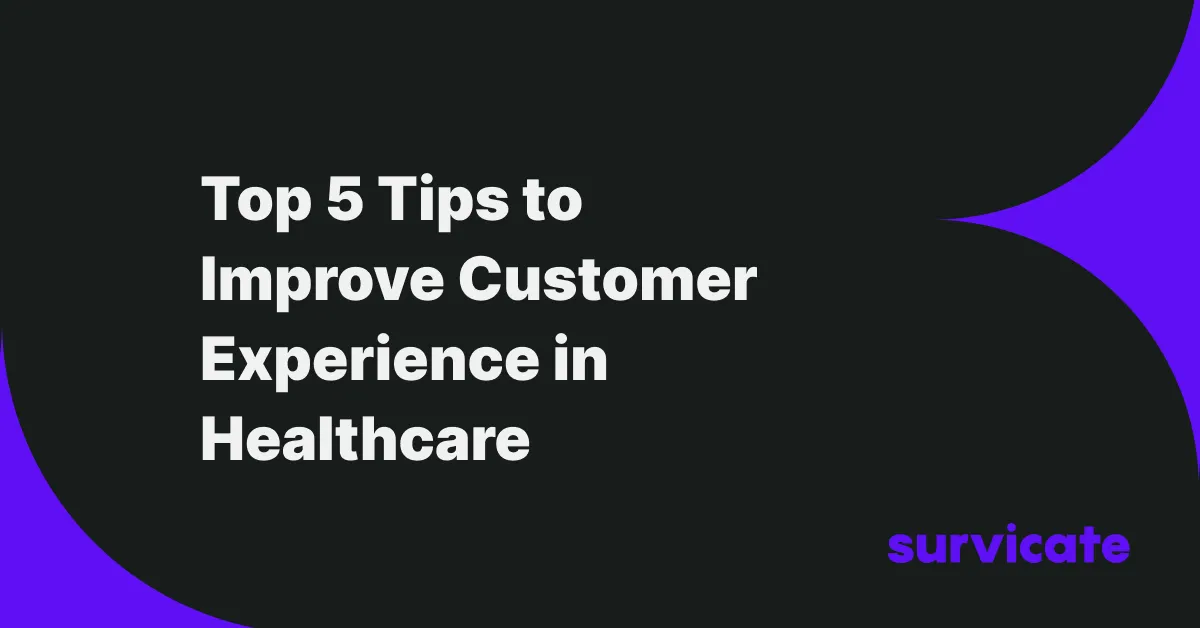
.svg)

.svg)



